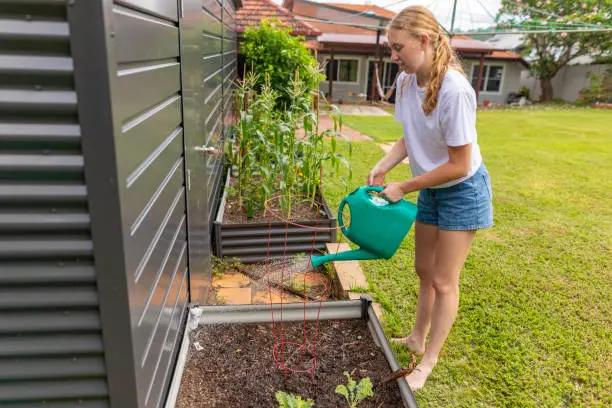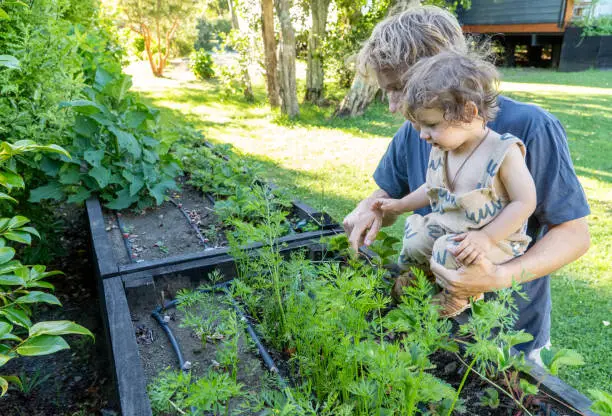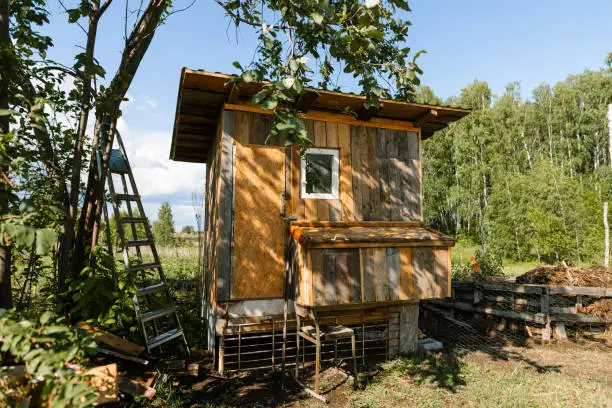Imagine a peaceful, self-sufficient garden getaway. Garden, farm, and live off the grid. In unpredictable times, emergency food supplies are practical and empowering. With enough planning and hard work, backyard farming can provide emergency food.
More than a trend, homesteading promotes self-sufficiency and sustainability. It lets you produce food yourself and reduce dependence on others. Growing your fruits, veggies, and herbs ensures a regular supply of fresh goods and gives you peace of mind in emergencies.
Let’s explore backyard homesteading’s emergency food supply challenges. The idea is to focus on long-term storage while preserving crop quality and nutrients.
Consider canning your crop. You can preserve the taste and nutrition of fruits and vegetables by canning. By carefully following canning instructions, you may preserve summer’s harvest year-round.
Dehydration is another option. Dehydrating fruits, vegetables, and meat concentrates taste and enhances shelf life. Imagine eating handmade dried apple slices or beef jerky during winter when fresh produce is scarce.
Root cellaring is another time-tested method. Discover how to keep root veggies like potatoes, carrots, and onions fresh for months by storing them underground with controlled humidity.
Emergency food supplies go beyond canned items and dried noodles. It’s about building a well-rounded pantry that can get you through any scenario, not simply food.
In addition to storing your crop, incorporate other non-perishable foods in your emergency food storage.
Stock up on condiments, spices, and cooking oils to enhance meal flavors.
After covering the basics of constructing an emergency food supply, let’s talk about backyard homesteading: growing food. Choose crops for your climate and growth circumstances.

Plan your garden with diversity in mind. Interplanting crops maximizes space and naturally deters pests. Planting marigolds with tomatoes will repel pests and brighten your garden.
Consider raised beds or container planting to boost garden productivity. These strategies improve soil drainage and weed management, making gardening more accessible for persons with limited space or mobility.
Backyard homesteading may seem difficult at first but don’t give up. Accept this practice’s constant change and learn from each season’s accomplishments and disappointments. Remember that even little self-sufficiency initiatives can change your life and the environment.
Remember resilience when you create an emergency food supply in backyard homesteading. Pests may invade, and others may change, but a solid plan and a can-do attitude can conquer any challenge.
Canning lets you enjoy summer’s bounty year-round by preserving flavor and nutrition. Dehydrating meats, vegetables, and fruits enhances flavor and shelf life. Root cellaring, an ancient process, preserves potatoes, carrots, and onions for months with controlled humidity.

An emergency food supply goes beyond canned foods.
Plan a climate-appropriate garden with diverse crops. Interplanting maximizes space and naturally deters pests. Container gardening and raised beds increase soil drainage and weed control.
Backyard homesteading is difficult, but perseverance pays off. Embrace the journey, learn from each season, and even modest efforts toward self-sufficiency can matter. Your sturdy backyard homestead will bring you security and pride.
Finally, backyard homesteading emergency food supplies is practical and empowering. Gardening and preserving food ensures a consistent source of fresh products even in unpredictable times. Embrace the obstacles, negotiate the complexity, and enjoy the results of your labor on this self-sufficient journey. Backyard paradise awaits!
Backyard Homesteading Storm Shelter Construction
Many factors go into backyard homesteading. Everything from generating food to raising livestock is possible. Emergency planning is routinely disregarded.
I understand your thoughts. Storm shelter construction seems complicated and requires careful design. Do not worry! With assistance and effort, you can easily manage the process.
Now that we know its value, we’ll build a storm shelter. Design a shelter that meets your needs and is safe.
Consider an underground storm shelter. These shelters protect against severe winds and flying debris and should be built using concrete or steel to improve structural integrity.
An above-ground storm shelter may be better for people with mobility challenges or limited space. These reinforced concrete or steel shelters can be constructed in garages or basements.
Plan for certain factors regardless of your chosen shelter. Location matters when designing a storm shelter. It should be accessible but discreet enough not to detract from your backyard.
Ensure the shelter is well-ventilated and large enough for your family and supplies.
Let’s discuss building. Storm shelter construction isn’t rocket science but requires some fundamental abilities. With the correct equipment and materials, this project is manageable.
Prepare the shelter site by excavating. Follow local building codes for depth and size. Pour a concrete foundation and add rebar after digging the hole.
Next, build barriers with concrete blocks or precast panels. Seal all joints to avoid water leaks. Last, install a strong door with heavy-duty latches to withstand high winds.
Always prioritize safety when creating a storm shelter. Consult professionals or local authorities if you have questions about any construction process.
Finally, creating a storm shelter in your backyard homestead protects your family during extreme weather. Despite its initial difficulty, you can build a haven that will give you peace of mind when Mother Nature strikes.
Survival during tornadoes and storms requires shelter. Consider a concrete or steel underground shelter for optimal wind and debris protection. A reinforced concrete or steel above-ground shelter may be better for people with mobility limitations or limited space.
Location, ventilation, and family and supply room are essential when planning a storm shelter.
The construction procedure includes site excavation, rebar-filled concrete foundation, concrete blocks or precast panels for walls, joint sealing, and a heavy-duty door with latches.
Safety is paramount; contact professionals. Building a storm shelter is difficult, but it protects your family in extreme weather. Your actions will reassure and safeguard your family in uncertain times. Get started on this crucial project. Protecting your family is worthwhile!
Roll up your sleeves, grab your hard hat (figuratively), and start this vital project. Your family will appreciate your precautions during uncertain times. In today’s ever-changing weather, their safety is everything!
Many things affect backyard homesteading. Food production and cattle raising are conceivable. Unplanned emergencies are common.
Building a storm shelter protects your family from extreme storms. Use an underground storm shelter for maximum protection or an above-ground shelter for easier access. Placement, ventilation, and space for family and supplies are essential.
The construction procedure includes site excavation, rebar-filled concrete foundation, concrete block or precast panel walls, joint sealing, and a robust door. Safety is paramount; seek professional advice. Your actions will protect your family in uncertain times.





Leave a Reply
You must be logged in to post a comment.